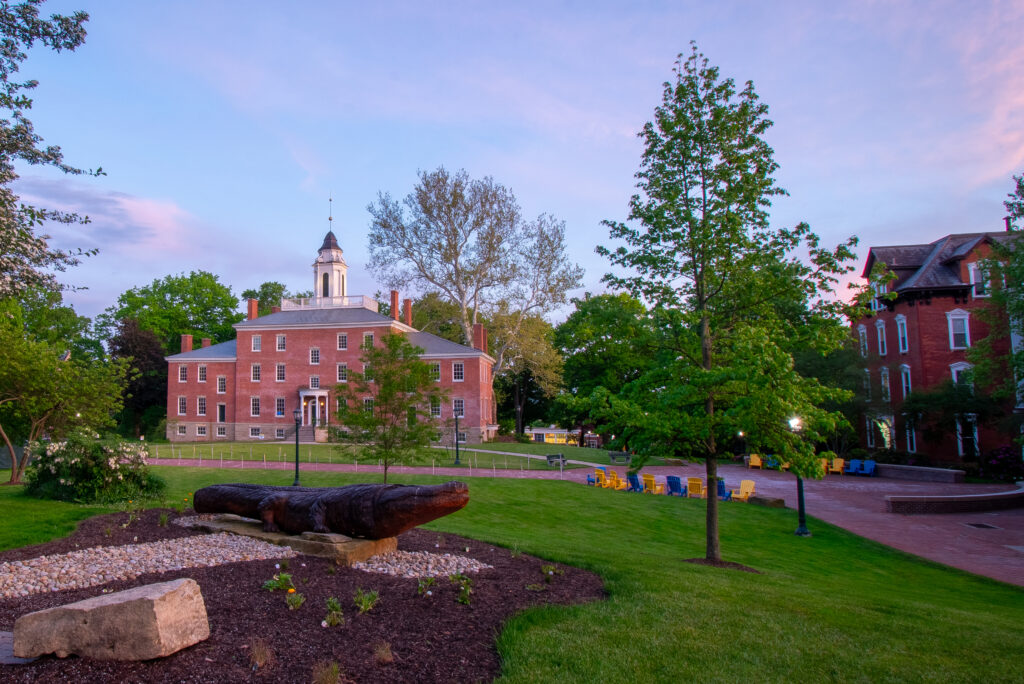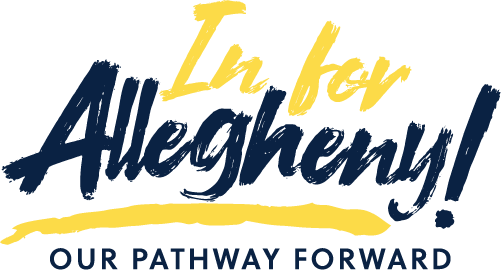
This article was originally featured in Planned Giving Today.
Allegheny College was founded on a June evening in 1815 on the northwestern frontier where Pennsylvania meets New York and Ohio. Its first fundraising campaign started the very next day.
The new president set off for points east, where, in addition to gifts and promises of cash, he accepted the college’s first planned gift: a private library collection that in 1820 led Thomas Jefferson to write, after reviewing a catalog of the bequeathed collection, “… we are just commencing the establishment of an University in Virginia but cannot flatter ourselves with the hope of such donations as have been bestowed on you.”
More than two centuries later, Allegheny College has embarked on its most ambitious campaign, intending to raise at least $250 million over five years to support the college’s strategic pathway.
The pathway results from a highly collaborative planning process, grounded in the traditions and values of the liberal arts and inclusive of all the college’s constituents.
Led by President Ron Cole, a geologist by training, we settled on the image of a pathway of stepping stones that may be laid, and shifted, as conditions warrant. Gone are the days when strategic plans would languish on a shelf, collecting dust.
Today’s colleges, universities, and other nonprofit organizations must be prepared to move quickly and nimbly, adjusting to changing circumstances as necessary.
Our campaign, “In for Allegheny: Our Pathway Forward,” allows us to do just that. This campaign is about far more than raising money. We realized that if we reach our dollar goal and accomplish nothing else, we will have wasted a tremendous opportunity for student and faculty support at a pivotal moment in higher education.
“In for Allegheny: Our Pathway Forward” purposefully engages constituents by asking them to do three things: invite, inspire, and invest.
We invite them to support enrollment by boldly sharing their transformative Allegheny College stories with prospective students and their families. Alumni, parents, and friends inspire current students by demonstrating through their careers and professional development how the college’s academic excellence and broad constituent network lead to equally strong post-graduate outcomes.
They speak about their career path challenges and successes, serve as mentors and door-openers, and offer internships and jobs. Lastly, constituents are financially investing in the college, focusing on immediate-impact scholarships, growing the endowment to increase annual operating support, and completing targeted, high-impact renovations on campus.
It is working. Allegheny College’s first-year enrollment increased by 13 percent for the 2024-25 academic year. The Class of 2024 boasted a successful outcome rate, with 98 percent reporting that they were employed, continuing their education, or serving in the military.
We have had three record breaking fundraising years in a row and recently announced the receipt of the largest gift in the college’s history: a $35 million bequest from the late Phil St. Moritz (Class of 1961), whose gift exemplifies everything we have learned about planned giving and all that we hope to achieve with our campaign.
He was inviting and inspiring long before we identified these actions as necessary components of a healthy advancement campaign. St. Moritz was an alumnus typical of his era. A native of western Pennsylvania, he studied economics, joined a fraternity, enrolled in ROTC, and was a varsity athlete.
After serving in the Air Force as a commissioned officer, St. Moritz returned to Pittsburgh and started on his path toward success as a serial entrepreneur. He eventually founded and was the sole owner and CEO of seven corporations under the St. Moritz Group umbrella, employing more than 4,000 people in 34 offices nationwide. Collectively, annual sales exceeded $100 million.
St. Moritz was a man who lived to work. Married and later divorced, his employees were his family. St. Moritz did not become involved with Allegheny College as an alumnus until 1984, when he made his first gift of $250 for the annual fund.
He never stopped giving afterward, though his gifts rarely exceeded $100 until 2001, when our colleague, Sally Barrett (Class of 1992), recruited him to serve on his 40th reunion committee. That year, he gave $1,000 as a gift and documented his intention to make a $2 million bequest.
When our board of trustees told college administrators that we needed a more significant presence in Pittsburgh (the closest major metropolitan area to Allegheny College), the St. Moritz Group became one of two co-sponsors of an annual holiday gathering that brought upwards of 1,200 alumni, parents, friends, and prospective students together in high-visibility venues.
A lot of college storytelling ensued, and parents loved it. St. Moritz’s giving increased steadily until he died in 2021, but it never topped $30,000 annually. Barrett’s cultivation and stewardship of St. Moritz over two decades brought him ever-closer to his alma mater. Through her efforts, his relationships expanded to include presidents, senior administrators, faculty, and students.
Always too busy to serve the college formally, St. Moritz inspired students for decades and hired several of them in his companies. The man who became his hand-picked successor as the CEO of the St. Moritz Group was hired two months after graduating from Allegheny College in 2005.
St. Moritz’s wealth was tied directly to his companies, so settling his estate took significant time, even with a succession plan for the business. It allowed us to work closely with his attorneys and employees to develop a thoughtful plan to honor our benefactor by creating The Phil St. Moritz Center for Innovation at Reis Hall.
This involves the complete reimagination and renovation of one of Allegheny College’s most iconic buildings, transforming it into a dynamic teaching and learning hub that will serve students across disciplines. Representing St. Moritz’s entrepreneurial spirit, it will serve as the home for the college’s teaching at the intersection of the liberal arts and emerging technologies.
We think and talk a lot about the St. Moritz gift and how it came to be. We wonder:
- What if our researcher had not identified St. Moritz as a prospect?
- What if Barrett had not invited St. Moritz to reconnect by serving on his 40th reunion committee and kept him involved with new opportunities? After all, he had only been a minor donor at the time.
- What if she moved on to other potentially greater prospects when his cash gift for a landmark reunion was only $1,000?
- What if Barrett left Allegheny without forging additional relationships between St. Moritz and the college?
We know the average tenure of an advancement officer at an organization is only 18-24 months. We dare say this magnificent gift would not have come our way. During the probate process, we learned that St. Moritz had removed several organizations from his will, as he felt he only heard from them when they wanted his money. He let them go because they had not maintained authentic relationships with him.
We were in the right place, with the right people, and with the right policies and procedures to receive this gift because Allegheny College has long championed a strong planned giving program. There is always a tension between fundraising for immediate needs and raising funds for the long
term.
Successful organizations strike a healthy balance between the two, with the major gift and planned giving teams working closely together to develop the best gift opportunities for donors and the organizations they support.
We generally ask that all major campaign donors commit to an annual gift, a current sacrificial gift, and an estate gift. “In for Allegheny: Our Pathway Forward” aims to raise $80 million in deferred estate gifts, representing 32 percent of the overall campaign fundraising goal.
We are formally changing the way we advance our institution by asking constituents for their time and talents in ways that are meaningful to them and useful to the college. Quantifying our work by adding enrollment-related and career and professional development related goals ensures that academic excellence, rooted in the liberal arts and strong student outcomes that reflect the needs of society, will continue at Allegheny College for the next 210 years.


